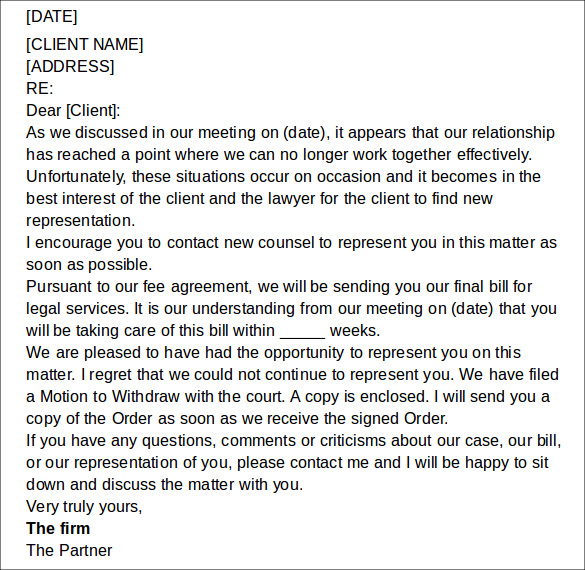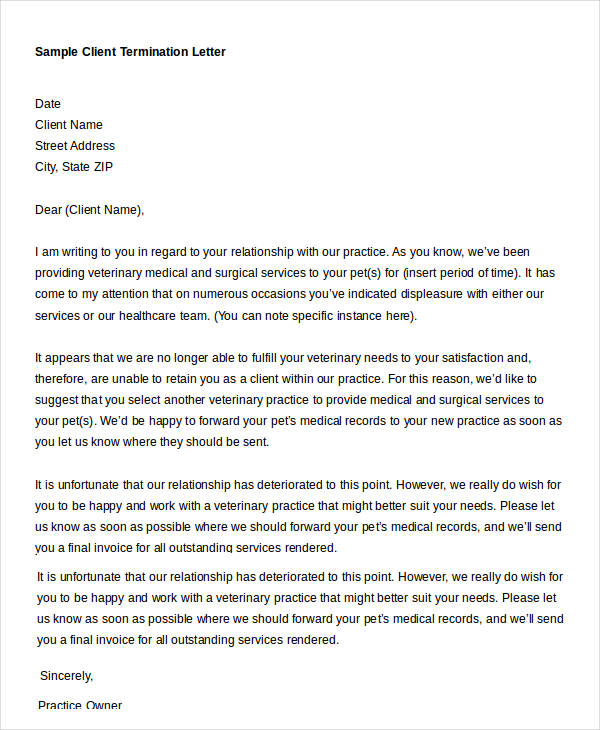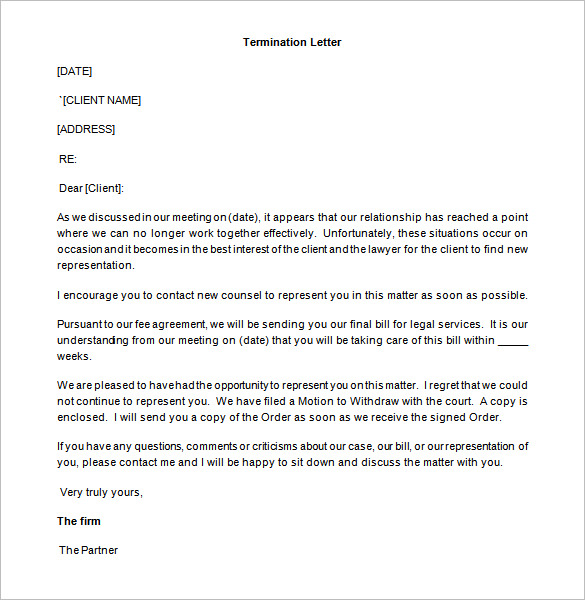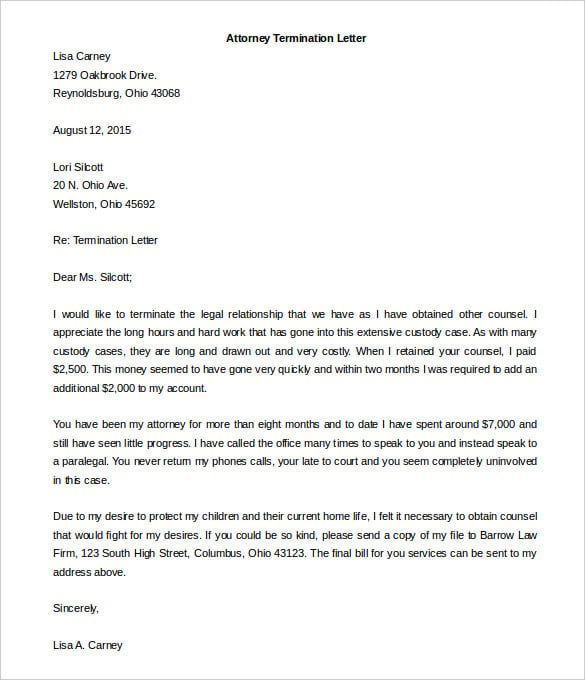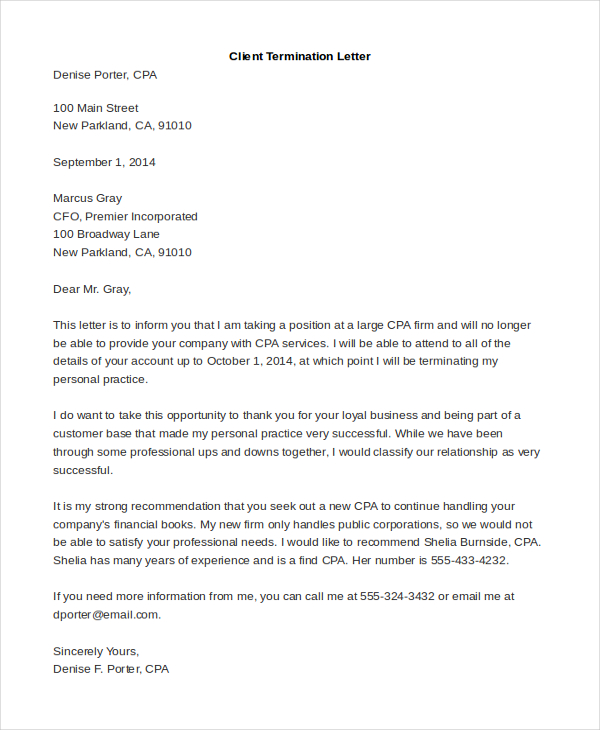How To Fire A Client Examples
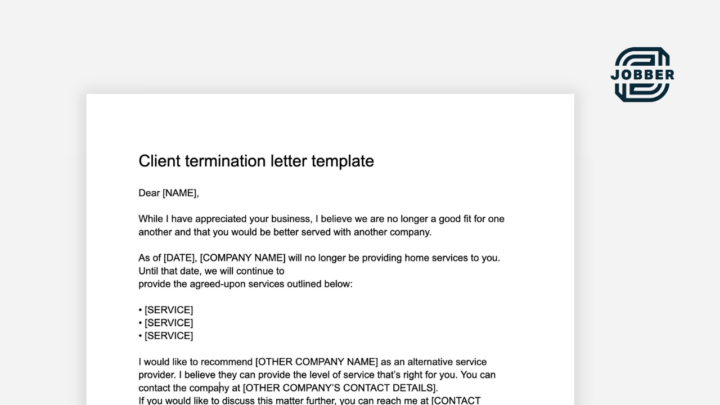
The client-service provider relationship, often built on trust and mutual benefit, can sometimes sour. Recognizing when a professional partnership has run its course and taking decisive action to dissolve it are crucial for the well-being of both parties. Navigating this delicate process requires careful planning, clear communication, and a solid understanding of ethical and legal obligations.
This article provides a practical guide to firing a client, offering real-world examples and highlighting best practices for ensuring a smooth and professional transition. It delves into the critical considerations that should inform the decision-making process and outlines the steps involved in formally ending the relationship, protecting your business, and preserving your professional reputation.
Recognizing When It’s Time to Part Ways
Identifying a problematic client is the first step. Chronic late payments, scope creep, and disrespectful behavior are red flags.
These issues can significantly impact profitability, morale, and the ability to effectively serve other clients.
According to a 2023 survey by Harvard Business Review, 40% of service providers cited "difficult client relationships" as a major source of stress and burnout.
Examples of Triggering Scenarios
Consider a freelance web developer who consistently faces demands outside the original project scope from a particular client.
Despite repeated attempts to clarify the boundaries, the client continues to request additional features without additional compensation, leading to frustration and project delays. This ongoing scope creep is a clear sign that the relationship needs reevaluation.
Another example involves a marketing agency working with a client who regularly dismisses their strategic recommendations and insists on implementing ineffective tactics.
If the client's actions are directly undermining the agency's ability to deliver results and are damaging the agency's reputation, terminating the contract may be necessary.
Ethical considerations also play a role.
If a client asks a lawyer to participate in illegal activities or if an accountant discovers a client is engaging in tax evasion, professional obligations require disengagement.
The Art of the Breakup: Practical Steps
Once you’ve determined that firing a client is necessary, the next step is to formulate a clear and professional exit strategy.
Document everything. Keep records of all interactions, including emails, meeting notes, and invoices. This documentation can be invaluable if disputes arise later.
Consult with legal counsel to ensure compliance with contract terms and relevant regulations.
Crafting the Termination Notice
The termination notice should be clear, concise, and professional.
Avoid accusatory language and focus on the practical reasons for ending the relationship. State the effective date of termination and outline any remaining obligations or deliverables.
For example: "After careful consideration, we have decided to discontinue our services to [Client Name] effective [Date]. This decision is based on our assessment of our ability to meet your needs within the scope of our current agreement."
Another approach might be: "Due to irreconcilable differences in project vision and communication styles, we believe it is in the best interest of both parties to terminate our contract. We will complete [Specific Deliverables] by [Date] as agreed upon."
Offer a transition plan, if possible. This might include providing the client with necessary files, data, or contacts to ensure a smooth handover to a new service provider.
Demonstrating a commitment to a seamless transition can mitigate potential negativity and protect your reputation.
Delivering the Message
Consider the best method for delivering the termination notice. A formal letter or email is typically appropriate, but a phone call or in-person meeting may be necessary in some circumstances.
Be prepared to answer questions and address concerns. Remain calm and professional, even if the client becomes upset or confrontational.
Document the conversation thoroughly. Send a follow-up email summarizing the key points discussed and confirming the termination date.
Protecting Your Business and Reputation
Firing a client, while sometimes necessary, can have implications for your business. Anticipate potential challenges and take steps to mitigate them.
Address potential negative reviews proactively.
Monitor online review sites and be prepared to respond to any negative feedback in a professional and constructive manner.
Maintain confidentiality.
Refrain from discussing the termination with other clients or colleagues. Confidentiality agreements should be strictly adhered to.
Focus on maintaining positive relationships with your remaining clients.
Demonstrate your commitment to providing excellent service and building strong partnerships. Invest in client relationship management tools and training to improve communication and address potential issues proactively.
Consider implementing a formal client onboarding process to ensure clear expectations and prevent misunderstandings. Outline your service scope, communication protocols, and payment terms in detail.
Regularly evaluate your client relationships and identify potential red flags early on. By proactively addressing issues before they escalate, you can minimize the need for difficult terminations.
Moving Forward: Lessons Learned
Each client termination provides an opportunity for reflection and improvement. Analyze the reasons for the breakdown in the relationship and identify any patterns or recurring issues.
Adjust your client selection process to better screen potential clients and identify those who are a good fit for your services. Incorporate personality assessments or in-depth interviews into your onboarding process.
Continuously refine your communication skills and conflict resolution strategies. Effective communication is essential for building strong client relationships and resolving disputes constructively.
Firing a client is never easy, but it is sometimes necessary to protect your business, your well-being, and your professional reputation.
By following a well-planned strategy, communicating clearly and professionally, and learning from each experience, you can navigate these challenging situations successfully and build a thriving practice based on healthy, mutually beneficial client relationships.
The long-term benefits of prioritizing healthy client relationships far outweigh the short-term challenges of letting go of a bad fit. Ultimately, focusing on quality over quantity will lead to greater success and fulfillment.
